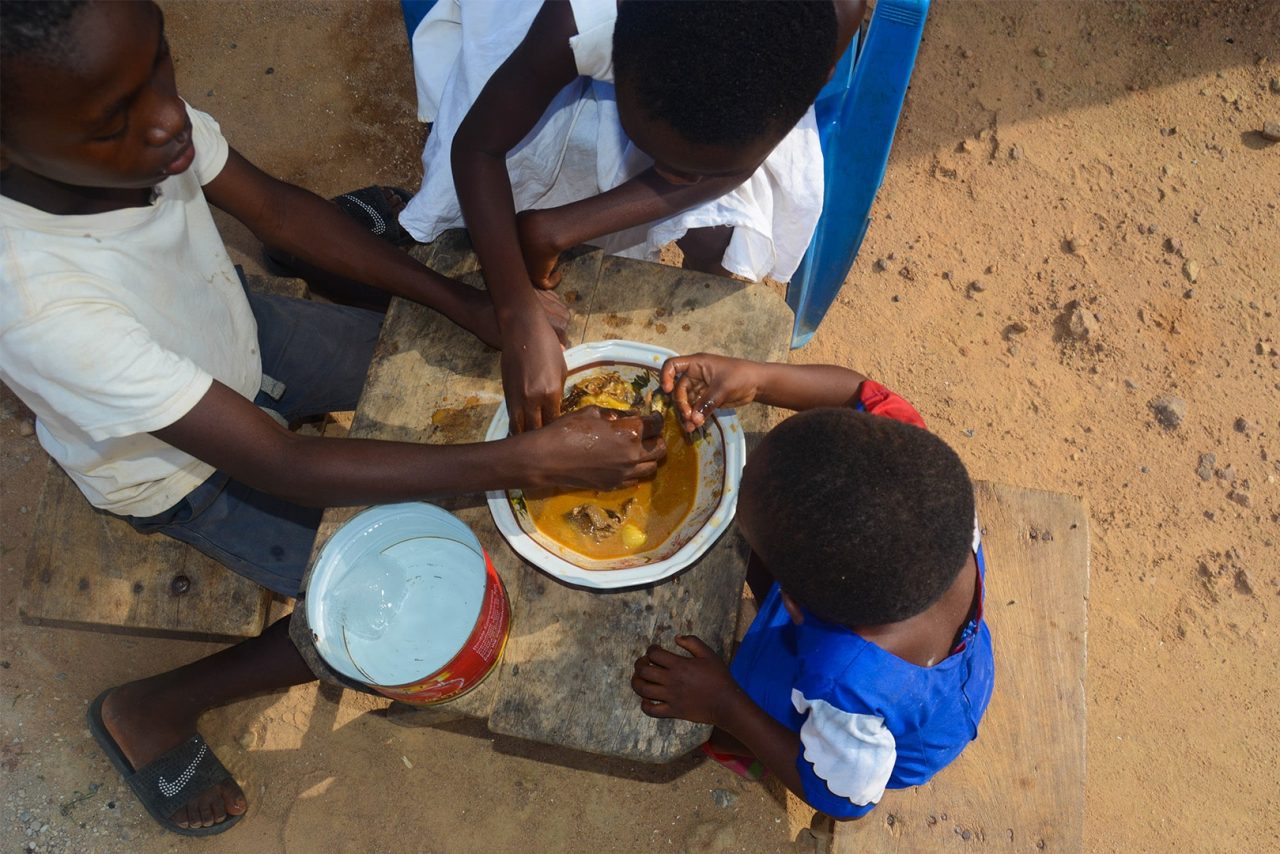Family activity resources
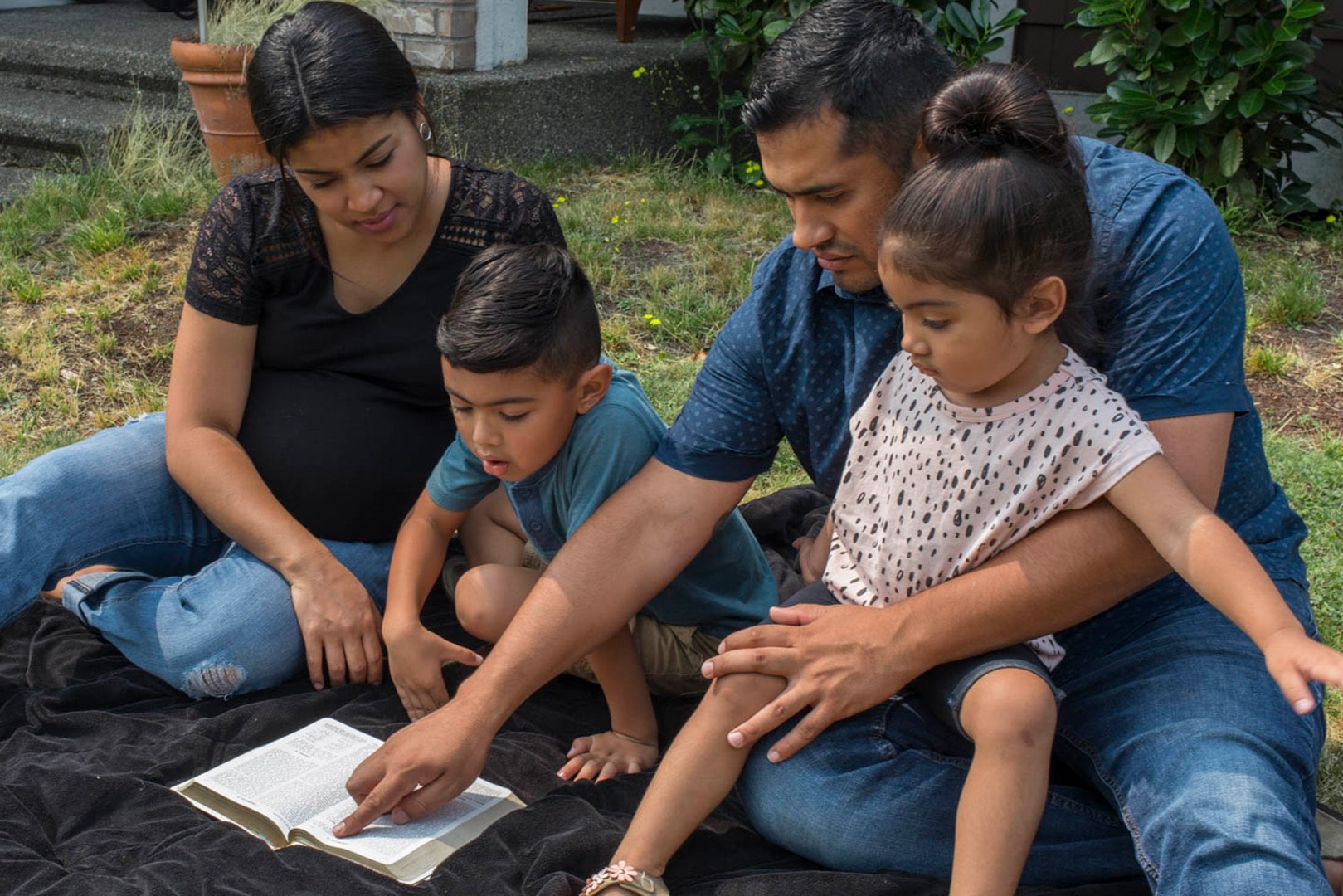
Ready to learn while having fun as a family? Take time to explore activities designed to challenge, learn, and even provoke thoughtful conversation.
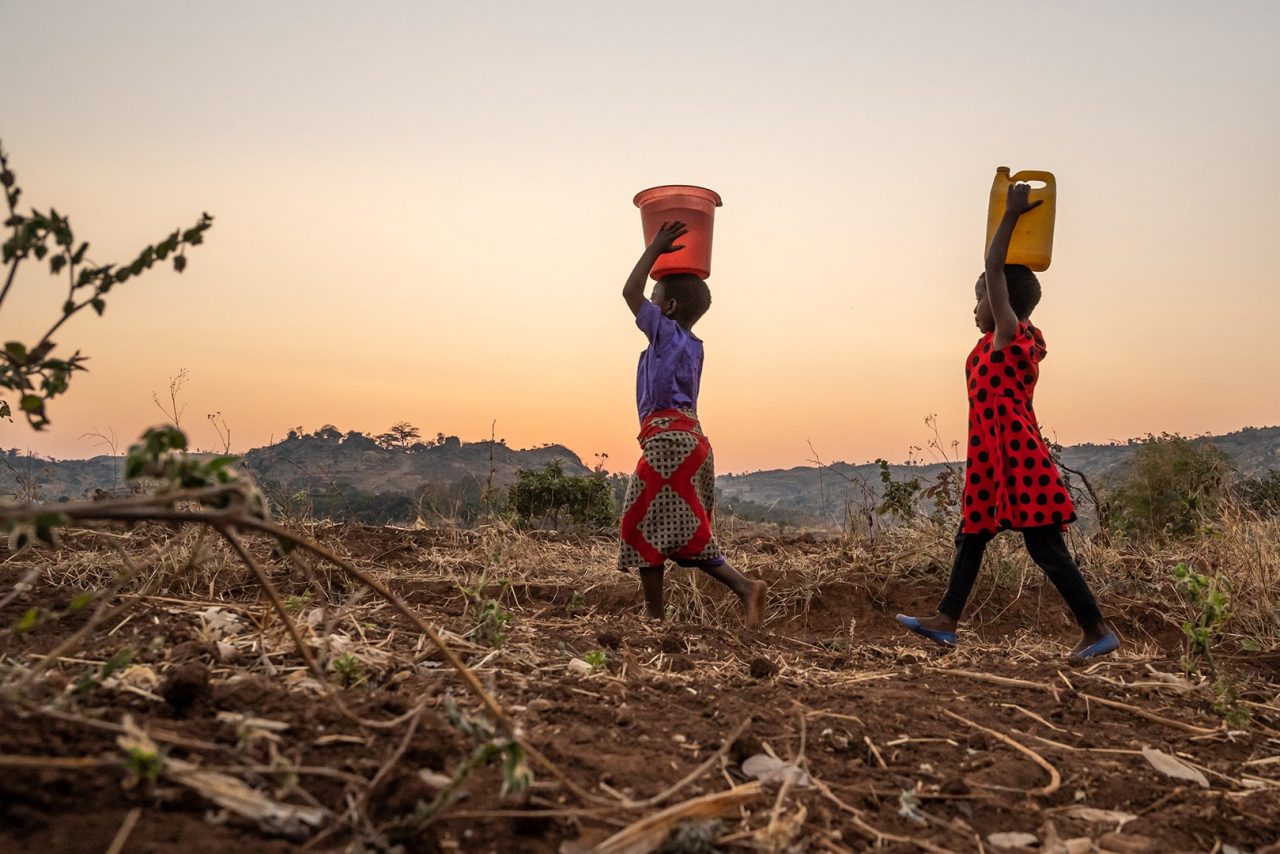
Water activity: water walk
Water is used in many more ways than we realize. The average American family uses over 300 gallons of water a day at home. Check out these averages:
- Teeth brushing: 1 gallon
- Flushing the toilet: 2 gallons
- Shower: 5 gallons per minute
- Dishwasher: 6 gallons
- Drinking water: 1/2 gallon per person
How much water does your family use? Water is fundamental to life. Imagine all the ways your daily routines would change if your access to clean water was gone. How many times would you have to go the river or water hole to get dirty water? This activity will give your family just the smallest taste of what that life is like.
NOTE: Play this one outside if possible! If you need to play inside, use a non-carpeted room, put down towels, and have a mop on hand to clean up spilled water. Expect to get wet!
What you’ll need:
- 2 buckets (3-gallon buckets or large mixing bowls)
- 2 large car-wash style sponges or plastic cups
- Towels
How to do the activity
Place the buckets (or bowls) about 15 feet apart. One bucket is “home” and the other is the “water source” where you’ll get the water. Your goal is to bring water home from the water source — by carrying it in a sponge (or cup) on your head, with no hands!
Place the empty sponge (or cup) on your head at “home” and walk to the “water source.” At the water source, take the sponge off your head, put it in the bucket, and let it soak up as much water as it can. Then put the full sponge on top of your head, remove your hands, and walk back to the home bucket. Squeeze the water from the sponge into the bucket (using your hands) and give the sponge to the next person, who will repeat the steps. This will continue until the water source bucket is empty!
If at any time the sponge falls off your head, you must return to the line you just left and start over. If you drop it on the way to the water source, you’ll start back at home. If you drop it on your way home, you’ll start back at the water source.
Play it forward: What did you learn?
Discuss these questions as a family:
- How long did it take you to get all the water “home”?
- How do you think life would change for someone who went from traveling hours each day to a water source to having easy access to plentiful, clean water?
Read Ireen’s story to get a deeper look at this journey, or dive deeper into World Vision’s water work.
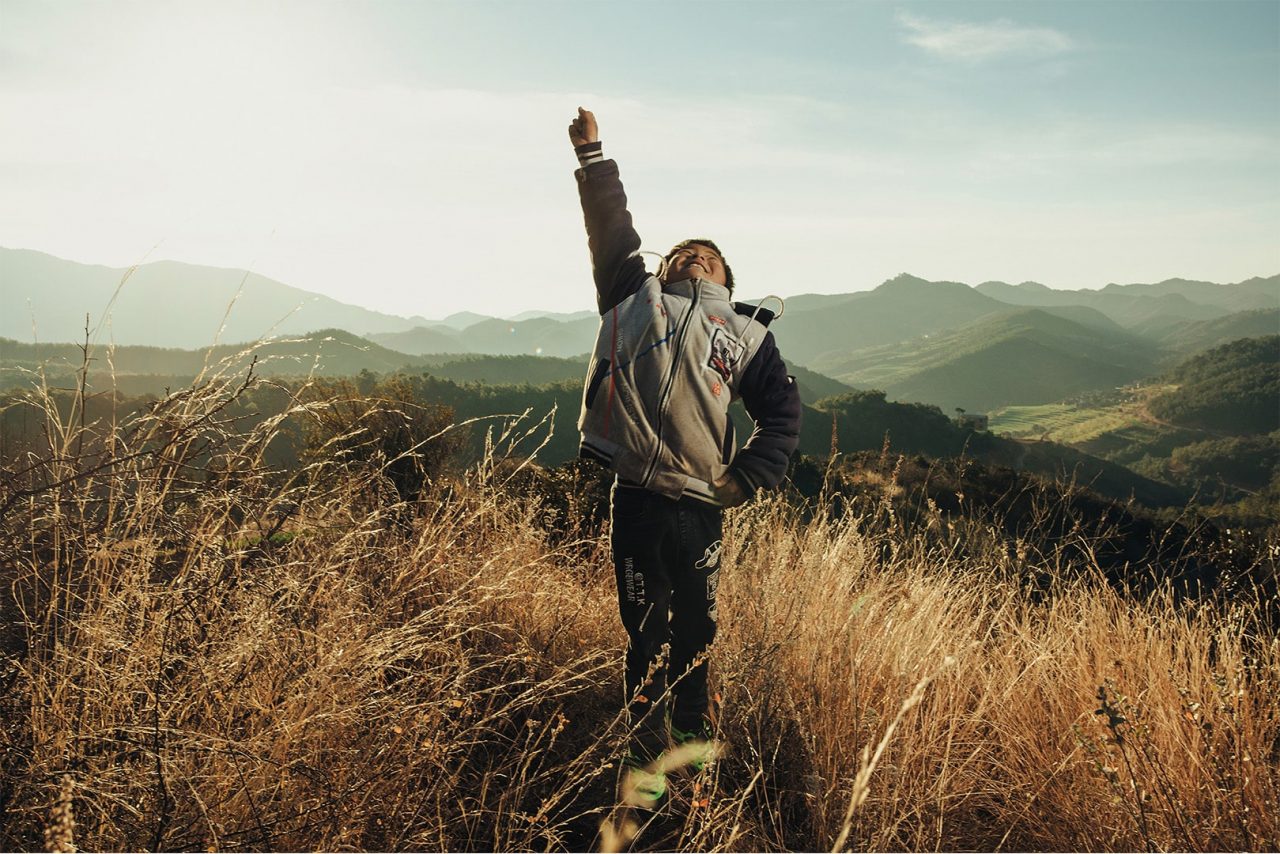
Woohoo — you accepted the Generosity Challenge!
Get ready: These activities were created to flex your family’s generosity muscles. We hope they’re fun, meaningful thought-starters for you all to grow together in gospel-centered care for people in need.
Rejoice always, pray continually, give thanks in all circumstances; for this is God’s will for you in Christ Jesus. —1 Thessalonians 5:16–18 (NIV)
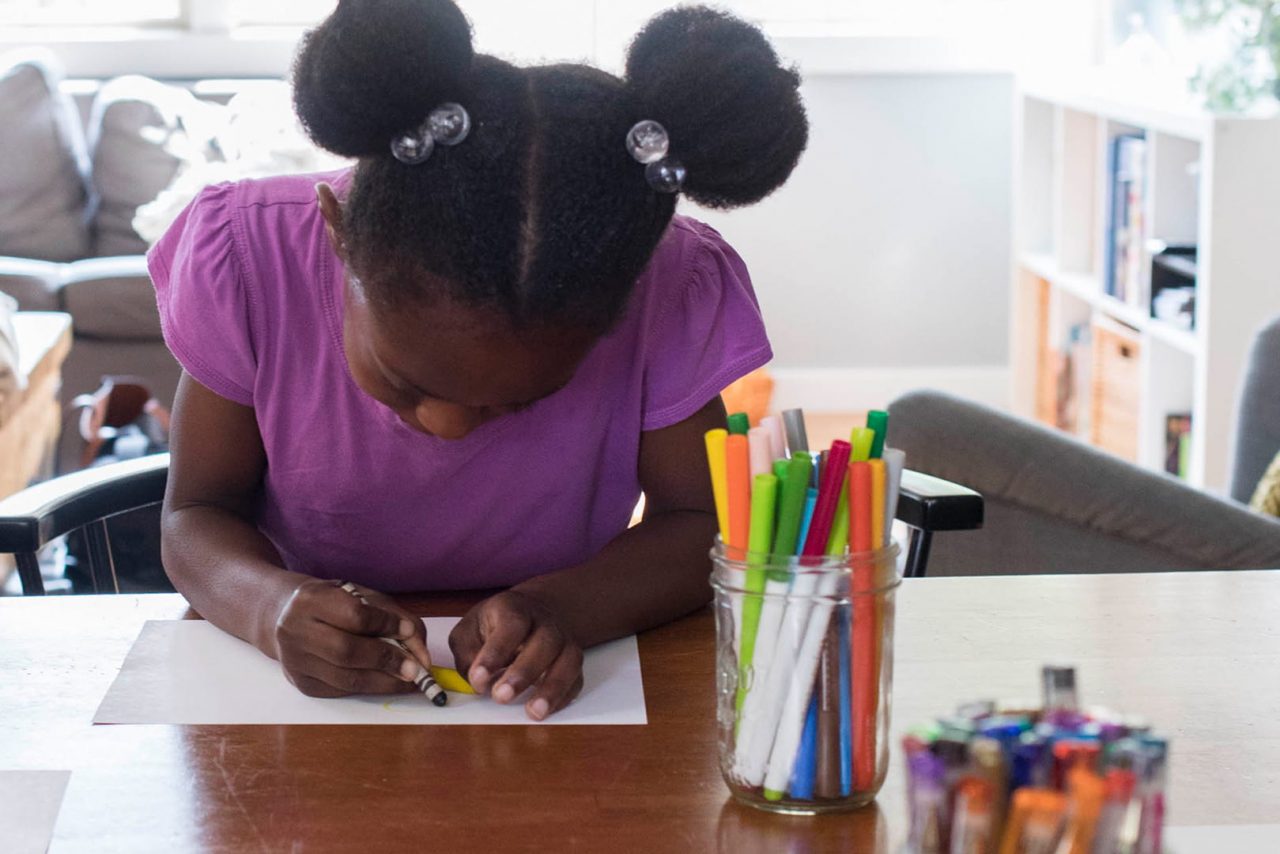
Generosity activity: DIY toy build
Most kids living in poverty don’t have many toys, but that doesn’t stop them from playing. They make toys out of what they find. The goal of this family activity is to be grateful for what God’s blessed you with — and to consider ways you can share those blessings with others.
What you’ll need:
- 10 simple items (not toys) picked by your kids from around your house or outside
- Tape
- Scissors
- Markers or colored pencils
How to do the activity
As a family, gather 10 items you can repurpose from around your house or outside that aren’t toys (think plastic bags, empty paper towel rolls, empty milk cartons, cardboard boxes, rubber bands, pinecones, sticks, etc.).
Once you’ve gathered your supplies, talk about these questions with your kids:
- How many toys do you have (parents should answer this one too!)?
- Do you think you have enough toys?
- How many gifts did you ask for last Christmas or on your birthday?
Then brainstorm together:
- How many toys can you make out of these items?
- What kinds of new games can you make with them?
- Need inspiration? See what other kids around the world do for toys or try this tutorial for making a soccer ball.
Play it forward: What did you learn?
Coming up with your own games means you activated your creativity, and building toys took cooperation. What special talents do you see in your family? Take turns telling everyone in your family what talents you appreciate about them.
“Play” it forward by helping your kids clean out their toys and donate the ones they don’t use anymore to a thrift store or a family who may not have much extra for toys. Try cleaning out your own closet or a section of the garage at the same time, to model this kind of generosity to your kids. You can also choose to give fewer gifts to each other this Christmas or for upcoming birthdays. Or consider starting a new rhythm of generosity: Have each of your family members pick a cause they care about and donate to it on that person’s birthday.
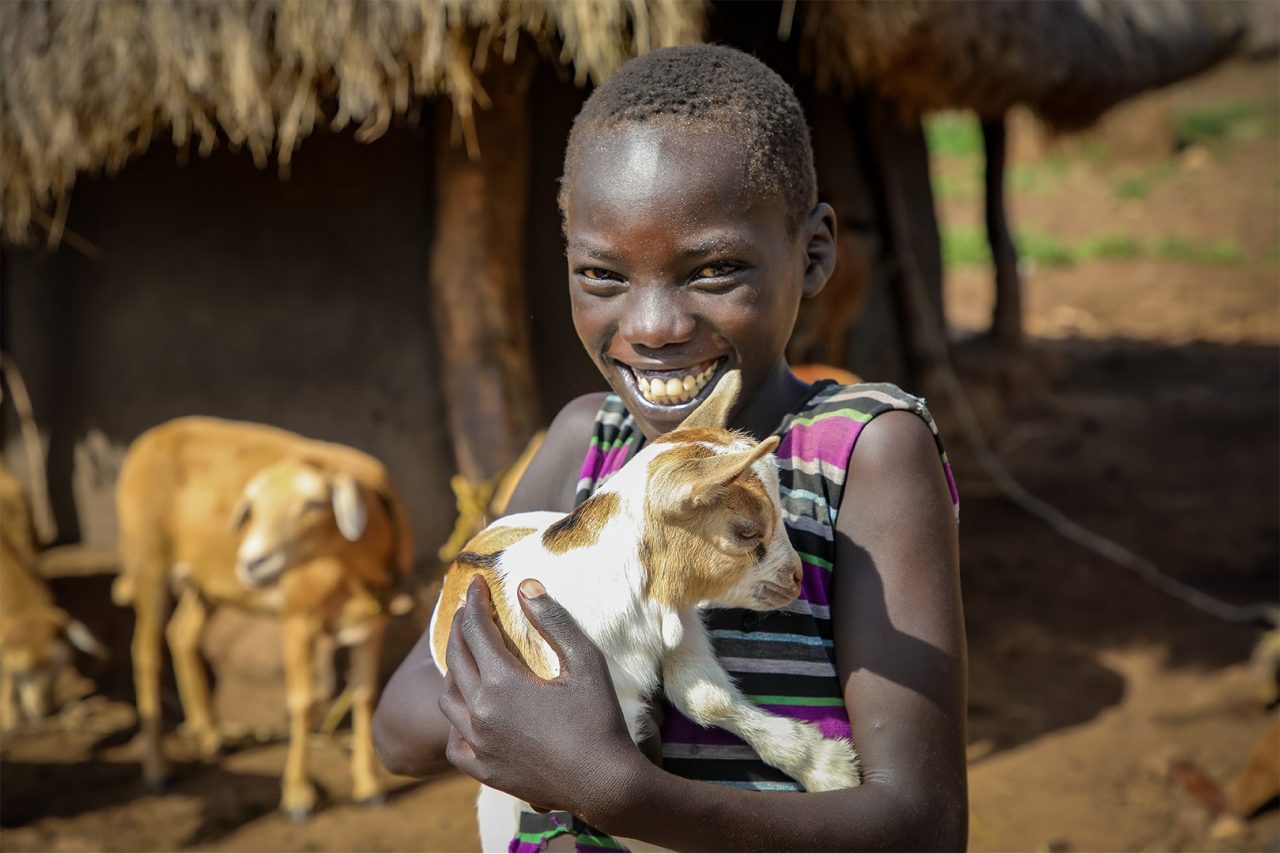
Generosity activity: gift-giving
This activity encourages your family to discover the abundance of gifts within your home — and within you. Behind every item in our homes is the talented work of others — people who use their knowledge and skills to produce the things we need, as well as all the people in between who get these items to us. How would your life change if everyone stopped using their God-given talents?
What you’ll need:
- A glass of water
- A fruit or vegetable
- A book
- A loaf of bread
- A shoe
- Pen and paper
How to do the activity
Place the items on a table and give everyone a pen and paper to write on.
Ask each person to write down how others were involved in the making of each item. What talents, tools, or knowledge were required for them to be able to create each item? In what way do they depend on the talents and knowledge of other people? Where did they learn how to create these things? Once everyone has finished, ask them to share and discuss their answers.
Next, ask them to go and pick out their favorite possession — a toy, book, instrument, hat, ball, etc. Ask them to answer the same questions for these items. Then ask how they would feel if the makers behind these items didn’t use their God-given talents to create them.
Play it forward: What did you learn?
To survive and thrive, we depend on the outpouring of other people’s gifts. There are hands and hearts behind the items we use daily. People are making and creating throughout the world, for the world — and it is good!
In James 1:17, we learn that “Every good and perfect gift is from above, coming down from the Father of the heavenly lights, who does not change like shifting shadows” (NIV). Discuss how God, the ultimate gift-giver, created each of us with a unique set of talents, passions, and abilities. What does it mean when we speak about “gifts” in terms of talents and skills and not presents we unwrap? Do you love to draw or dance? Are you great at soccer or math? How could you share your unique strengths to help others?
Generosity activity: soup share
Sometimes all of us, especially children, feel like we can’t make a difference with the little we have. But together, even the smallest contributions multiply — so everyone gets back more than they gave. Learn about the importance of sharing through this story about stone soup — and learn how to make it!
What you’ll need to make stone soup (feeds 6 to 8)
- Large pot
- 3 medium-sized stones, washed clean
- 1 tablespoon oil
- 1 onion, diced
- 4 cups vegetable stock
- 1/2 cup peanut butter
- 2 cups fresh or canned tomatoes with juices, diced
- 1/4 teaspoon crushed red pepper flakes
- 1 cup cabbage, finely chopped
- 1 cup sweet potatoes, peeled and chopped
- 1 cup carrots, peeled and chopped
- 1 cup turnips, peeled and chopped
- 1 cup okra, chopped
- 1 to 2 cups cooked chicken, chopped
- Salt and pepper to taste
In Zambia and other places where World Vision works, health staff teach moms to combine three kinds of foods (an approach called Go, Grow, Glow) to make sure their kids get the nutrition they need. “Go” is energy food: grains, roots, and tubers. “Grow” foods — proteins like milk, eggs, legumes, fish, and chicken — build the body. “Glow” foods — fruits and green leafy vegetables — help protect the body from disease.
How to do the activity
First step: Read the following story.
Three travelers walked slowly down a road in a strange country. They were tired and hungry. They had eaten nothing for two days.
“I would like a good dinner tonight,” said the first. “And a bed to sleep in,” added the second. “But that is impossible,” said the third.
Soon they saw a village. “Maybe we’ll find a bite to eat and a bed to sleep in,” they thought.
When the villagers heard that three strangers were coming, they were worried. “Here come three strangers,” they said. “Strangers are always hungry. But we have so little for ourselves.” So, they hid all their food.
The travelers stopped at a house. “Good evening,” one said. “Could you spare a bit of food?” one asked.
“And do you have a corner where we could sleep for the night?”
“Oh, no,” the man lied. “We have nothing to share.” Then the woman lied, “And our beds are full.” At each house, the response was the same.
The travelers talked together. The first one called out, “Good people! We are three hungry visitors in a strange land. We have asked you for food, and you have no food. Well, we will have to make stone soup.” The villagers stared.
The travelers asked for a big iron pot, water to fill it, a fire to heat it, and three stones. They dropped the stones into the pot.
[Take out the pot and drop in the stones.]
“Any soup needs salt and pepper,” the first one said, so some children ran to get salt and pepper. “Stones make good soup, but carrots would make it so much better,” the second traveler added. A woman replied, “Why, I think I have a carrot or two!” She ran to get the carrots. “A good stone soup should have some potatoes,” said the third traveler. Another woman said, “I think I can find some potatoes.” And off she went. The travelers said, “If only we had a bit of barley, this soup would be fit for a king!” And so another villager found some barley.
“The soup is ready,” said the travelers. Tables were set up in the square, and all sat down to eat.
Never had there been such a feast. Never had anyone tasted such delicious soup made from stones! The mayor offered beds at his home for the travelers. In the morning, the villagers gathered to say goodbye.
“Many thanks to you,” the people said, “for we shall never go hungry now that you have taught us how to make soup from stones!”
Now let’s finish making our stone soup! (Feel free to remove the stones first.)
Stone soup directions:
- Heat oil in a large pot over medium heat.
- Sautee onions about 5 minutes or until translucent.
- Whisk 1/2 cup of the vegetable stock and all the peanut butter into the onions until the mixture is smooth.
- Add in the remaining vegetable stock, diced tomatoes with liquid, and red pepper flakes. Bring mixture to a boil.
- Reduce heat to medium-low, cover, and simmer for 30 minutes.
- Stir in cabbage, sweet potatoes, carrots, and turnips. Cover. Simmer, stirring occasionally, for 30 minutes or until vegetables are tender.
- Stir in okra and chicken. Simmer until okra is tender (about 30 minutes for raw or 10 minutes for canned).
- Season with salt and pepper to taste. Then enjoy!
Play it forward: What did you learn?
Talk about these questions as a family:
- What did each of you like or dislike about the story?
- What made the soup taste good?
- How did the villagers change while the soup was cooking?
- What is the story’s message? Why is sharing important — and what happens when people don’t share?
Read John 6:5–13, the story of Jesus feeding 5,000 men (plus women and children!) with the loaves and fishes offered by a little boy. What happened when the little boy shared what he had? How did Jesus use the boy’s gift? How do you think the boy felt when he saw so many people fed because he shared?
Brainstorm ideas about how you can share with others this week.
- Is there a family that you could support with groceries, errands, or babysitting?
- Could you write or draw encouraging cards for people who’ve had a tough year?
- Even spending extra time in prayer for people around you is sharing more of your time to benefit others.
